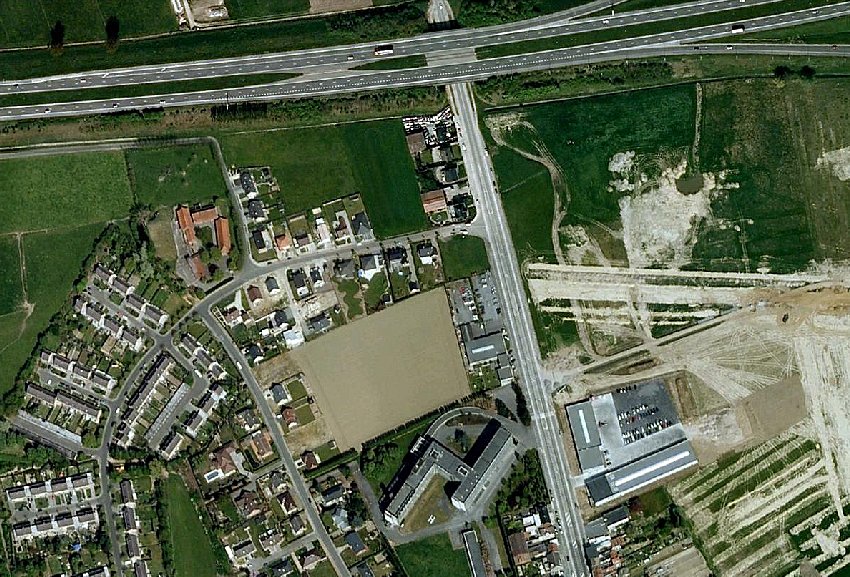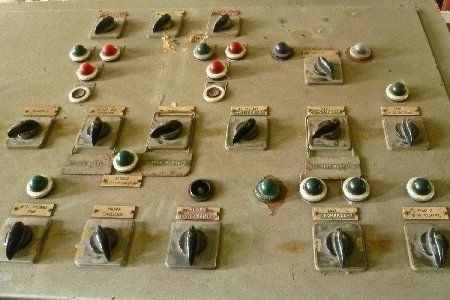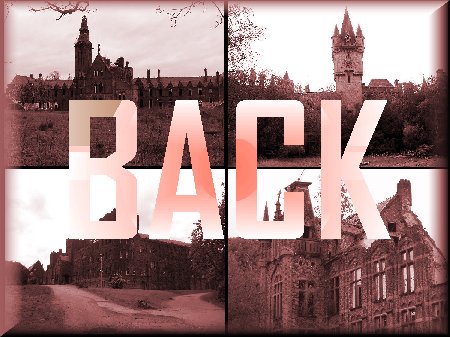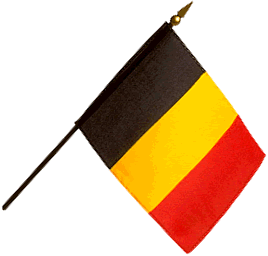|
 It is
not completely clear as to why this hospital is known as "HH
2" but I understand from conversations
with other urban explorers that the HH initials in the title stand for "Heilig
Hart" which translates as
Holy Heart from the
Dutch/Vlaamsch. I was also told that the church was originally involved in
some way with this hospital but again I cannot comment with complete
certainty other than to say that the suffix 2
pertains to the fact that in Belgium there are several of these HH
hospitals - for example HH 1 is situated close to the Dutch border up in the north east of the
country - we have as yet to explore it so watch this
space as they say! It is
not completely clear as to why this hospital is known as "HH
2" but I understand from conversations
with other urban explorers that the HH initials in the title stand for "Heilig
Hart" which translates as
Holy Heart from the
Dutch/Vlaamsch. I was also told that the church was originally involved in
some way with this hospital but again I cannot comment with complete
certainty other than to say that the suffix 2
pertains to the fact that in Belgium there are several of these HH
hospitals - for example HH 1 is situated close to the Dutch border up in the north east of the
country - we have as yet to explore it so watch this
space as they say!
To the layman it
would appear at first glance that HH2 was formerly a general hospital -
this is not the case. The presence on the ground floor of several delivery rooms
in a large maternity suite indicates its main purpose however the hospital
also specialised in paediatrics. We found at least one conventional operating theatre, and we saw
signage indicating a physiotherapy department - known as
Ergotherapie in
Dutch and Vlaamsch. From past explorer's reports too it is
clear that there was once a mortuary complete with fridges however these
have now been removed. On one of the upper floors we also found a laboratory suite complete with an
isolation cabinet for working on tissue samples without exposing the
technician to any risk of infection or to toxic chemicals.
As far back
as 1273 a hospital of sorts, though perhaps not as we now might now define
the word, existed close to where HH2 stands forlorn and empty today. The
town of Menen sat firmly astride the pilgrim's over land route from the
channel coast to Rome and on to Jerusalem, and a
document dated 1408 mentions
the "Passanten
lieden gasthuis van minheere Sint Jooris"
- a shelter or guest house
provided by charitable persons and operated by Augustine nuns from the
adjacent convent. Although it was primarily a place of rest and
succour for religious travellers the nuns also treated sick pilgrims so
this may be regarded as the beginning of the hospital. By the time of the
French Revolution - Belgium did not exist as a country until 1830 so this
area was part of France at the time -
Heilig
Hart
Hospital was recognised as a civil hospital. The
next major landmark was in 1936 when a dedicated maternity clinic was
built and then in 1952 the current hospital buildings were erected. Since
then there have been constant changes - in 1967 a separate
non-profit making organisation was established for the operation of the
hospital and in 1980 a new wing was inaugurated, finally being designated
"maternity and paediatric" in 1982. But by the early years of the 21st
century the writing was on the wall for HH2 as a progressive merging of
the hospital with a second more modern one further into town began.
Finally in 2009 HH2 closed its doors for the last time.
 A
rather unusual feature of HH2 is that contrary to expectation the main
entrance is situated on the first floor accessed by a long ramp curving
around the building from the west side
-
RIGHT . The ground upon which the
hospital is built is completely flat as is the norm pretty much everywhere
in Flanders, therefore a ground floor entrance suite would have been far
simpler and much less expensive to build - I don't doubt there was some
logic in the architect's design though I have to say that exactly
what logic he applied totally defeats me! A
rather unusual feature of HH2 is that contrary to expectation the main
entrance is situated on the first floor accessed by a long ramp curving
around the building from the west side
-
RIGHT . The ground upon which the
hospital is built is completely flat as is the norm pretty much everywhere
in Flanders, therefore a ground floor entrance suite would have been far
simpler and much less expensive to build - I don't doubt there was some
logic in the architect's design though I have to say that exactly
what logic he applied totally defeats me!
Getting
inside to explore this hospital was interesting to say the least and we
had actually made two visits before we managed to gain access. On the
first occasion we spotted a gaping hole about 6 feet up a wall where a large section of
double glazing had been smashed but any form of visual screening from
prying eyes at this
 entry point was none existent, recent comprehensive
pollarding of a row of trees leaving this aspect of the hospital
completely open to view from a row of houses close by. Erring on the side
of extreme discretion as always we decided it was a no no in daylight so
we left feeling rather disappointed. A few weeks later we decided a
re-visit was on the cards but during our preliminary circuit of the
building we noticed that the previous access point was now securely
boarded, so we were left considering the only alternative - someone had
recently smashed some glass bricks out of a wall on the opposite side of
the main building in an area that was not overlooked. The question now was
whether or not I would be able to squeeze my not inconsiderable bulk
through a vertical gap at waist height barely 12 inches wide by three
bricks high, the problem exacerbated by the fact that I would have to
shimmy my way in, twisting from the standing position on to my side
without support because my feet were off the ground!!! Needless to say,
with a helping hand under my right boot providing sufficient support I
managed it but I was not terrifically pleased to find what appeared to be
human excreta smeared all over sheets of broken glass and an old office table
immediately behind the hole. Of course with my feet still firmly resident
in the outside world at this point I had little option but to put my hands
down precisely where my common sense, my eyes, and above all my nose, told
me I really would be better off avoiding. Thankfully neither of us urb-ex
without some form of serious hand protection but I was still amazed when I
gingerly sniffed my gloves to find there was nothing worse on them than a
bit of mortar dust - result! Due to her petite build TJ had rather less
trouble getting in and thankfully with me on the inside we were able to
keep her clear of hazards, both biological and material. entry point was none existent, recent comprehensive
pollarding of a row of trees leaving this aspect of the hospital
completely open to view from a row of houses close by. Erring on the side
of extreme discretion as always we decided it was a no no in daylight so
we left feeling rather disappointed. A few weeks later we decided a
re-visit was on the cards but during our preliminary circuit of the
building we noticed that the previous access point was now securely
boarded, so we were left considering the only alternative - someone had
recently smashed some glass bricks out of a wall on the opposite side of
the main building in an area that was not overlooked. The question now was
whether or not I would be able to squeeze my not inconsiderable bulk
through a vertical gap at waist height barely 12 inches wide by three
bricks high, the problem exacerbated by the fact that I would have to
shimmy my way in, twisting from the standing position on to my side
without support because my feet were off the ground!!! Needless to say,
with a helping hand under my right boot providing sufficient support I
managed it but I was not terrifically pleased to find what appeared to be
human excreta smeared all over sheets of broken glass and an old office table
immediately behind the hole. Of course with my feet still firmly resident
in the outside world at this point I had little option but to put my hands
down precisely where my common sense, my eyes, and above all my nose, told
me I really would be better off avoiding. Thankfully neither of us urb-ex
without some form of serious hand protection but I was still amazed when I
gingerly sniffed my gloves to find there was nothing worse on them than a
bit of mortar dust - result! Due to her petite build TJ had rather less
trouble getting in and thankfully with me on the inside we were able to
keep her clear of hazards, both biological and material.
ABOVE LEFT
- a
glass brick wall exactly the same as the one through which we eventually
gained entry.
Once we
were in, and after the usual silent pause to listen for evidence of undesirable company, we were able to proceed with relative ease, there
being few barriers to progress. At this time the building was still water
tight and hence there was little in the way of internal decay. There has
inevitably been some vandalism and tagging however it is minimal when
compared with what we find when exploring abandoned buildings in the UK.
Sadly though there is not much to see in the way of artefacts as anything
with much value is inevitably long since gone - only a few beds and assorted bits and bobs
remain with the exception of the tissue handling cabinet in the lab area,
and even that was little more than a shell.
However the basement level
was a totally different matter altogether - we found the plant room very quickly,
and it appeared to be complete and undisturbed. Considering that the
standby generators are down here together with the boilers, compressors et
all - precisely the kind of stuff pykeys inevitably target - it is likely
that the removal of the equipment most readily associated with a
hospital must have been carried out at the time of closure. Whilst down in
the plant room we heard voices outside through the louvered air vents in
the wall. Given the obvious attitude to security at this site we
immediately wondered if we had been spotted getting in and that this might
be the police, the time elapsed being about right for a jam-jar full of le
dibble to arrive, so we froze and waited
with our hearts thumping. But whoever it was soon disappeared and we were
left to continue our exploration in peace.
So... our
overall impressions?
Well to be perfectly honest it's an OK explore -
and yet paradoxically it's not
brilliant despite the fact that it is obviously kept
extremely secure
and therefore offers little or no opportunity to metal thieves and pykeys.
I have never seen a site where previously open points of entry are so
rapidly re-sealed and I am 99% certain that our route in will no longer be
open. Add to which, when we were over in February 2013, just eight months
later, we could not visually locate the hospital as we drove past which
may mean it has now been demolished - that or we weren't looking in the
right place of course, but that's very doubtful quite frankly. In view
then of the secure nature of
the building and its relatively intact state it ought to have been a super
explore, and so it's still rather hard to pin down why we remained so
under-whelmed throughout our visit. I think
this site can best be summed up by saying that if you enjoy wandering
along endless
corridors in a charm less, utilitarian building where the only remaining
furniture is MDF/chip board cupboards and cabinets bolted to the
walls, then this is for you. But if you prefer something a little more
visually stimulating then perhaps this is one to bypass - and that's easy
enough because it is situated literally 30 seconds from a major
motorway!
 |
Below is a
selection of the photographs we took in and around
Heilig
Hart II
Hospital
in June 2012.
To
view any of the photographs in a far bigger size then click on the
image of your choice and it will open in a new window.
Click right on the
BACK button if you wish to return to our urb-ex
site front page... |
 |
|
The photographs on this
website MAY NOT BE USED WITHOUT THE EXPRESS PERMISSION of the
website author... |
|

